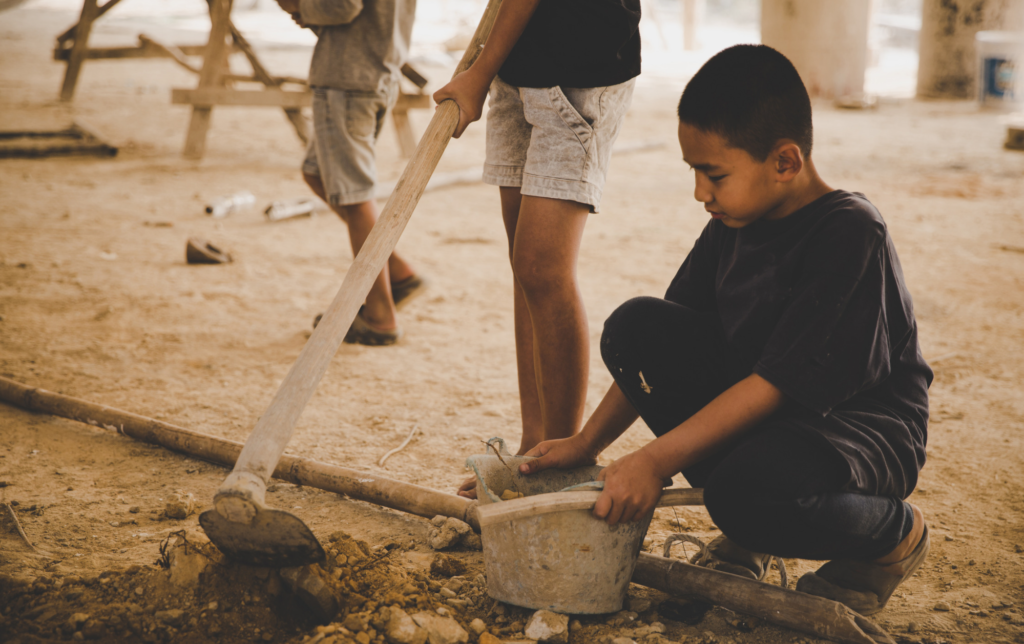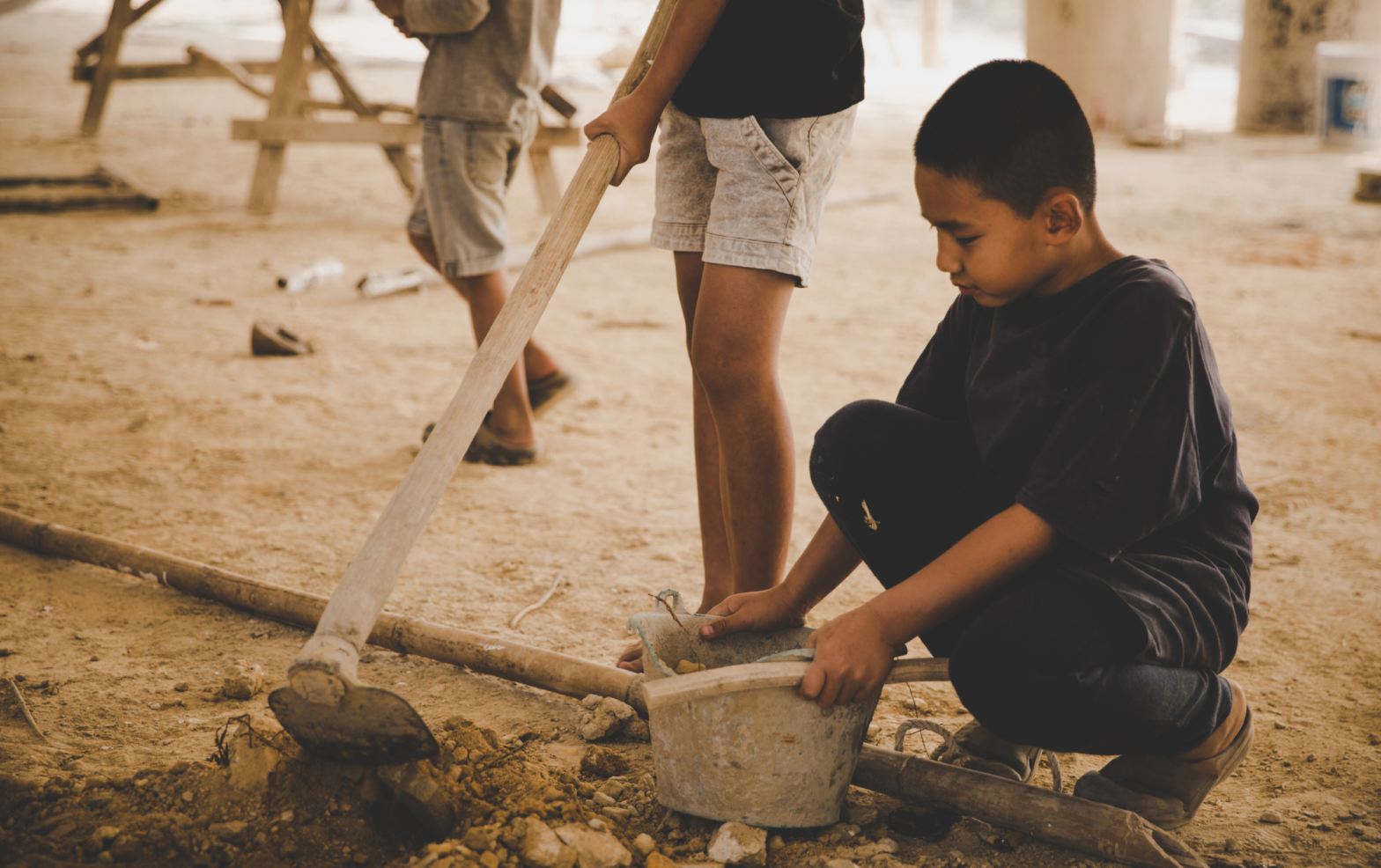What Is Child Labor?

Child labor is the unethical practice of employing children, typically under the age of 15, in various occupations. These children often have to work long hours in dangerous conditions and are denied their basic rights, like going to school. Child labor is a major ethical problem worldwide. It forces children to begin working too early in their lives, taking away their chance to have a normal and healthy childhood, and it also limits their physical, emotional, and intellectual growth. Child labor is widespread in developing countries due to socioeconomic factors, poverty, and limited educational opportunities. Regions such as Africa, Asia (including Bangladesh, India, and Pakistan), Latin America, and certain countries in the Middle East are commonly associated with high rates of child labor. According to a 2021 report by UNICEF in collaboration with the International Labour Organization (ILO), the global number of child laborers reached approximately 160 million in 2020, with expectations to grow further due to the impact of the Covid-19 pandemic.
In this article, we’ll discuss the various consequences of child labor to better understand how child labor impacts children, the economy, and society at large.
Social Consequences of Child Labor
Child labor affects children’s social development and well-being in many ways. This section will explain the social consequences of child labor in terms of educational, health, and emotional outcomes.
Impact on Education
Child labor has a negative effect on children’s education. When children are made to work, they aren’t able to attend school regularly, which hinders their ability to receive a proper education. This denies them the opportunity to learn basic knowledge, acquire important skills, and reach their full potential. Without education, their prospects for better jobs in the future are limited, keeping them stuck in poverty and thus maintaining social inequality.
The same UNICEF and ILO report shows that 53 million of the 160 million child laborers worldwide have no access to education. This statistic not only shows the immediate consequences of child labor but also raises concerns about the long-term prospects and security of these children’s future.

Risks to Health and Safety
Child labor exposes children to many health and safety risks. Children workers often find themselves in hazardous workplace conditions that threaten their well-being. They may be subjected to dangerous machinery, toxic substances, physically demanding tasks, and long working hours. Such conditions can lead to injuries, illnesses, and even casualties. Child labor not only jeopardizes the physical health of children but also affects the overall well-being and quality of life they are supposed to have.
According to an ILO report, 79 million child laborers are exposed to hazardous working conditions, most frequently in occupations in agriculture, mining, construction, and manufacturing. These children, whose bodies are still developing, are at greater risk compared to adult workers in these sectors. In severe cases, child laborers are forced to work in drug production and trafficking, prostitution, and armed conflicts.
Impact on Emotional and Social Development
When children start working at an early age, it hinders their emotional and social growth. Instead of having a caring and supportive environment, they are forced into adult responsibilities and confronted with harsh realities. Working prevents them from socializing and bonding with their peers, which impairs their ability to develop social skills, establish relationships, and shape their identity. This lack of emotional and social growth can have long-term effects, affecting their self-confidence, mental health, and overall integration into society.
According to The Alliance For Children Protection in Humanitarian Action, child laborers are highly subjected to a variety of psychosocial hazards. These hazards include experiencing anxiety and depression from being separated from their parents, feeling stressed and exhausted due to long working hours, and in severe cases, enduring maltreatment and sexual violence, resulting in mental trauma and potential self-harm. These psychosocial hazards severely impact the emotional and social development of children within the work environment.
Economic Consequences of Child Labor
Child labor affects the economy on a local and national level. This section will explore how child labor impacts productivity levels, workforce dynamics, income inequality, and the overall economic development of a region.
Exploitation and Low Wages
Child laborers are often paid very low wages. Employers exploit their vulnerability by paying them far less than what would be fair for the kind of work they do. These unfair wages not only take advantage of the children but also keeps them trapped in a cycle of poverty, as they are unable to earn enough to escape economic hardships.
For example, in Bangladesh, child workers are subjected to extreme work schedules, often exceeding 100 hours per week, while receiving minimal compensation of less than $2 per day. This concerning reality highlights how children from developing countries are systematically exploited. This will have a negative impact on the country’s long-term economic growth.
Impacts on Local Economies
Child labor has negative impacts on local economies. When children are engaged in labor and limit their access to education, their chances of developing crucial skills diminish. As they grow up uneducated, the community lacks a workforce equipped with the necessary qualifications and expertise to drive local economic growth and productivity.
For example, the local economies in sub-Saharan countries are experiencing a drop in their local economic growth. The top 5 poorest countries in the world are from the sub-Saharan region. According to statistics on child labor, sub-Saharan countries have the highest number of child laborers worldwide, comprising approximately 26% of their child population ages 5 to 17. This shows how child labor weakens the local economy, slowing the progress of development and productivity.
Long-Term Consequences on National Economies
As child labor increases in a country, the long-term consequences of child labor extend to its national economies. With more children growing up without education and lacking in skills, nations miss out on the potential talents and capabilities of their future leaders, innovators, educators, workforce, and more. This leads to a diminished human capital base, slowing economic development and competitiveness on a broader scale.
Additionally, child labor has detrimental effects on a country’s import and export activities. Many countries have established strict regulations and ethical standards to combat child labor and protect human rights. In response, international trade agreements and market demands now require compliance with these standards, including the prohibition of child labor. Neglecting to address child labor practices can lead to trade barriers such as import restrictions or boycotts imposed by consumer countries that are concerned about human rights violations. These measures can restrict a country’s access to international markets and hinder its export potential, which can significantly affect its economy.
Final Thoughts
Taking action to stop child labor not only helps the economy but also improves the well-being of society and ensures equal opportunities. By addressing the root causes of child labor, such as poverty, lack of education, and weak legal frameworks, countries can create an environment that uplifts individuals and encourages inclusive progress. By investing in education, social protection programs, and enforcing labor rights, children can be protected and included in a fairer society where everyone has the chance to thrive.
Acknowledging the negative effects of child labor on the national economy serves as a compelling reason for countries to take action. By eliminating child labor, investing in education, and fostering an environment that respects the rights and well-being of children, countries can unlock the full potential of their workforce, drive sustainable economic growth, and build a fair and prosperous society for future generations.

